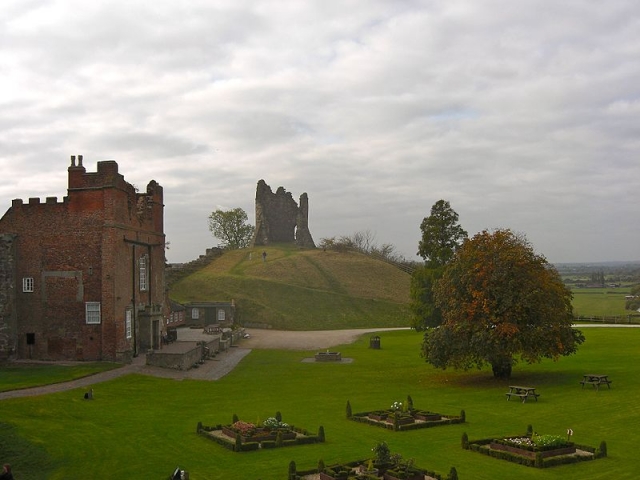Tutbury: 'A Castle Firmly Built'
Book Review

Tutbury: ‘A Castle Firmly Built' - Archaeological and historical investigations at Tutbury Castle, Staffordshire, Malcolm Hislop, Mark Kincey and Gareth Williams, Birmingham Archaeology Monograph Series 11 [BAR 546], 2011, Archaeopress, 293p, ISBN 978-1-4073-0855-5, £55-00.
This is the long-awaited report on the historical evidence that has emerged at Tutbury Castle and its proximity since the early 19th Century. Tutbury Castle overlooks the River Dove which, at that point marks the boundary between Staffordshire and Derbyshire, but it had a wider strategic significance in the governance of the north Midlands.
It embraces an assessment of the evidence surrounding the discovery of the Tutbury Hoard in 1831. This is believed to have been the largest-ever discovery of a coin hoard, with estimates varying from 100,000 to 300,000 coins. Only 1,500 of these coins are in public collections, the rest were pillaged by local villagers directly the discovery had been made. The hoard is said to have been hidden in the bank of the River Dove shortly after Thomas of Lancaster's defeat at the nearby Battle of Burton Bridge in 1322. The quality of what has survived is a matter of continuing interest and it is still believed that further coins may yet be recovered from the immediate locality.
There is detailed assessment of research carried out in the Park Pale which is an outer line of embankments to the south of the castle, towards the Forest of Needwood, and also of modern excavations within the Castle precincts which have revealed that the Norman occupiers of the site came relatively late in terms of the total history of the site. Of course the prominence that Tutbury Castle assumed during the imprisonment of Mary Queen of Scots and its deterioration as a fortified position from the Civil War period also attract some attention.
Local historians of Staffordshire and Derbyshire will find this report of interest: they can easily get a sense of the overriding analysis without being overwhelmed by the technical detail. By contrast those who are interested in either the strategic significance of this site or the richness of archaeological evidence which has emerged on this relatively restricted site, or both, will equally find this a very informative and helpful report.

